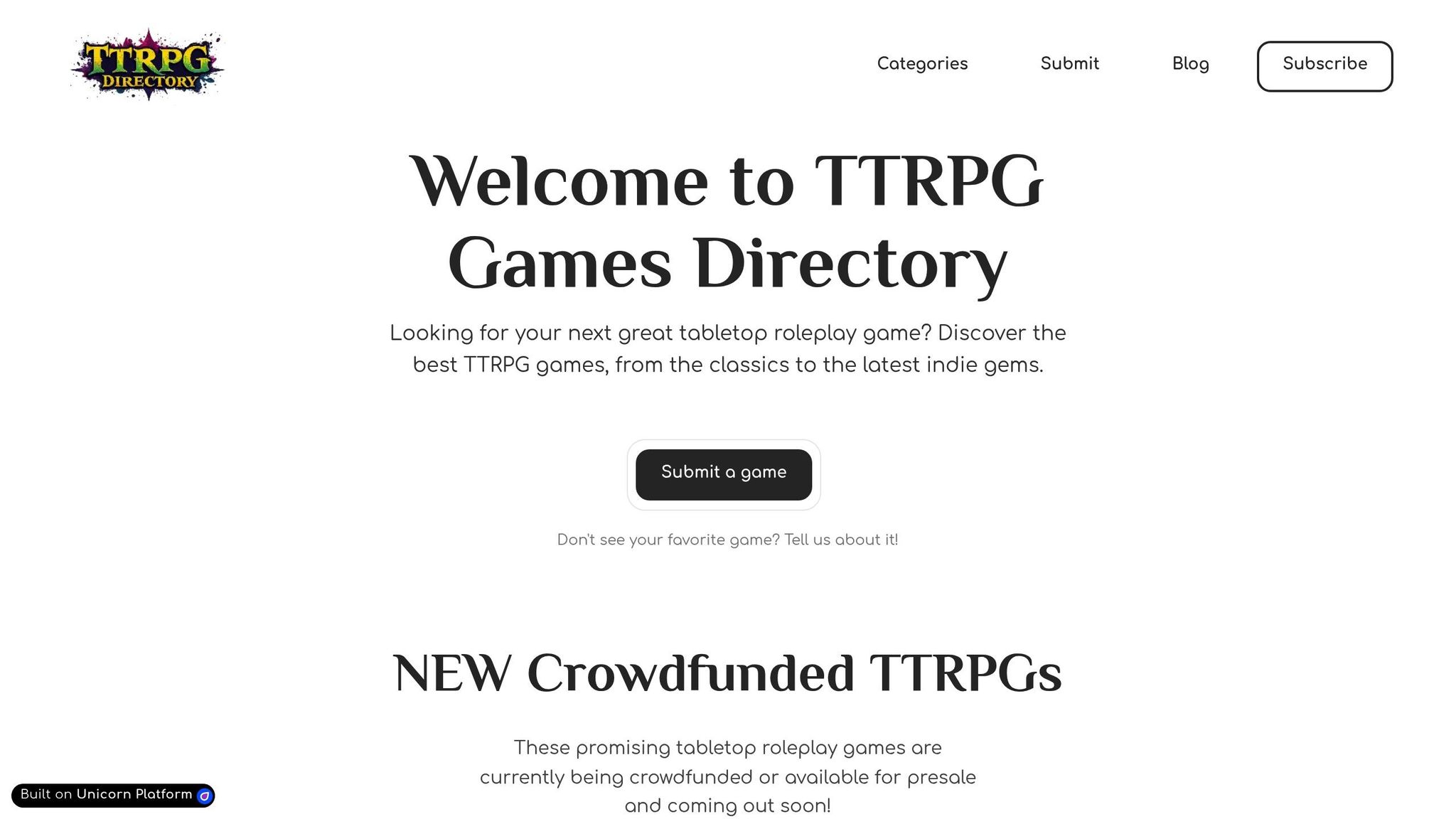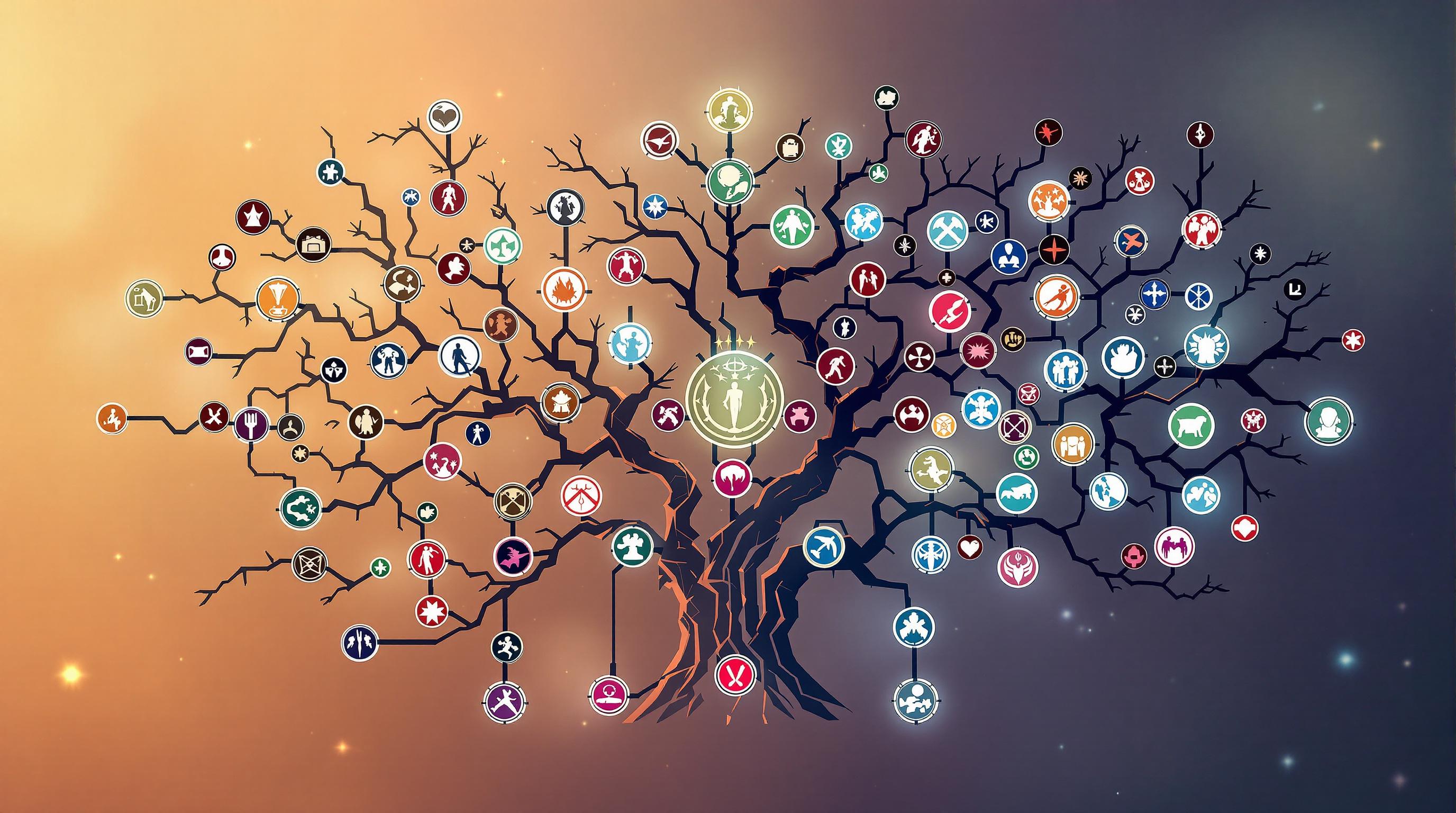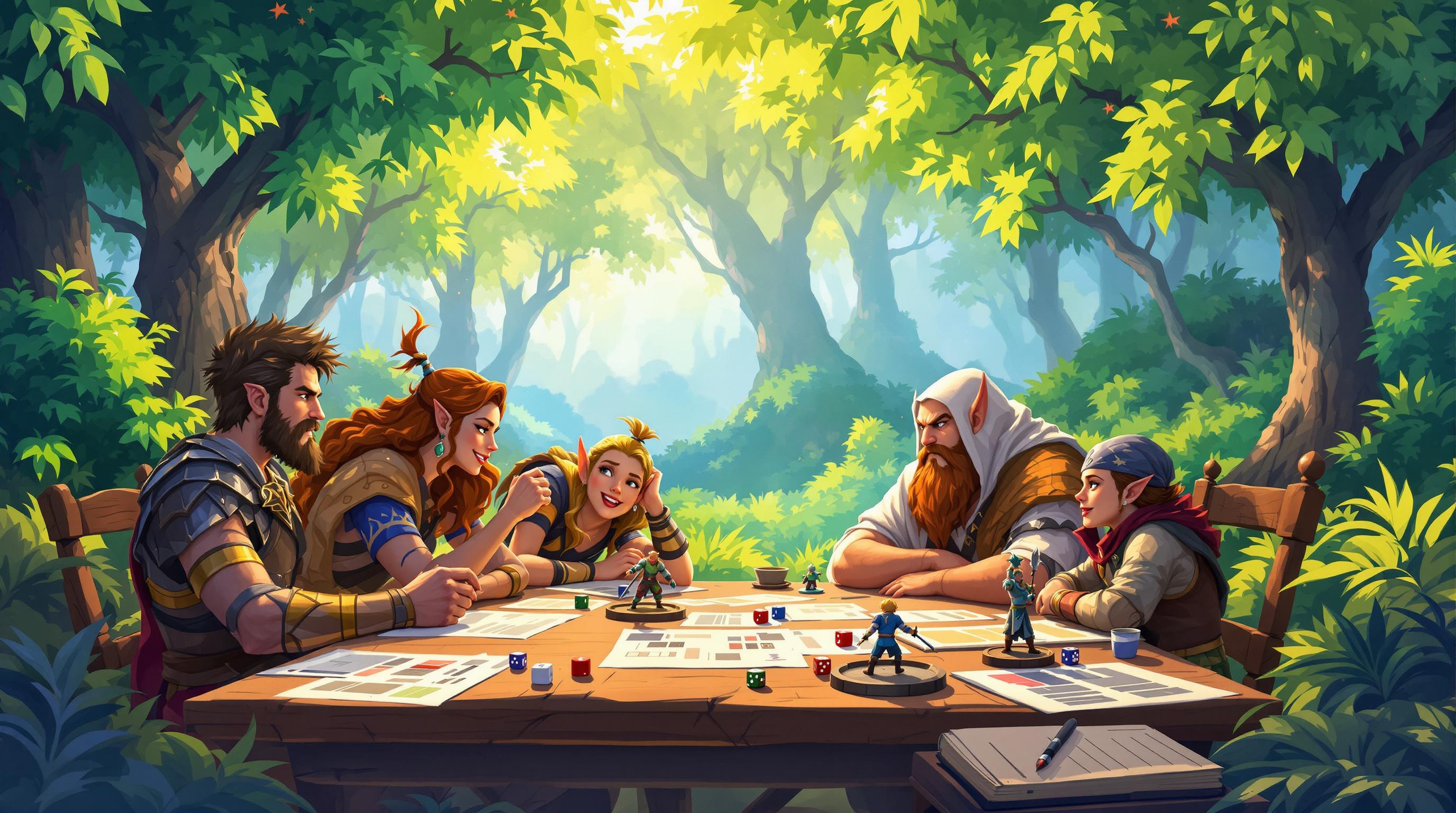PvP (Player versus Player) in tabletop RPGs can add excitement and depth but requires careful balancing to keep it fair and fun. Here’s what you need to know:
- Why Balance Matters: Ensures fair play, supports different playstyles, and prevents group conflicts.
- Common Challenges: Skill gaps, character power differences, and real-life tensions spilling into the game.
- Core Strategies:
- Use systems like point-buy for fairness.
- Balance risk and reward with reversible penalties and meaningful incentives.
- Incorporate story-driven conflicts tied to character goals and campaign events.
- Social Dynamics: Set boundaries, encourage collaboration, and reward roleplay to maintain harmony.
- Testing PvP: Playtest mechanics, gather player feedback, and track changes to improve over time.
Quick Overview of PvP Balance Tips:
| Problem | Solution |
|---|---|
| Skill gaps | Adjust encounters to level the playing field. |
| Overpowered characters | Use balanced creation systems like point-buy. |
| Disruptive social dynamics | Set clear rules and manage disputes privately. |
Balancing PvP means combining fair mechanics, engaging narratives, and active management to create a fun experience for all players.
5 Tips for Running PVP D&D | Let Your Players FIGHT!
Basic Rules for PvP Balance
Creating engaging PvP encounters relies on finding the right balance between risk and reward. This balance lays the groundwork for fair and dynamic gameplay.
Risk vs. Reward
PvP encounters should be challenging yet fair, avoiding excessive permanent penalties. Here are some key principles to achieve this:
-
Graduated Consequences
Design outcomes that match the intensity of the conflict. For example, minor skirmishes might lead to temporary setbacks, while larger battles could result in more impactful - but reversible - consequences. -
Balanced Incentives
Rewards should encourage participation without disrupting the game’s equilibrium. A duel victory, for instance, might provide temporary boosts or non-permanent advantages. -
Recovery Mechanisms
Include systems that help players bounce back, like penalties that expire after a short time or opportunities within the game’s narrative to recover lost resources.
These principles ensure PvP remains both rewarding and fair, keeping players engaged without unnecessary frustration.
Game Mechanics for PvP
Game mechanics like point-buy character creation are key to creating balanced PvP encounters in TTRPGs. The point-buy system allows players to distribute a fixed pool of points across their character's abilities. This ensures customization while maintaining fairness, as it keeps character power levels in check and avoids giving anyone an unfair edge.
sbb-itb-b8b00a5
Story and Social Balance
Balancing PvP in TTRPGs goes beyond just mechanics - it requires thoughtful integration of narrative elements and social dynamics. A successful PvP system fits naturally into the story while promoting positive interactions among players.
Story-Driven Conflicts
PvP encounters should feel like a natural extension of the story, driven by character motivations and key campaign events. To create meaningful stakes, connect conflicts to:
- Character backgrounds: Let rivalries or conflicting goals emerge from characters' histories.
- Campaign outcomes: Ensure PvP events have a tangible impact on the larger story.
- Faction dynamics: Use tensions between groups or factions to spark organic conflict.
For instance, if two characters are part of rival merchant guilds, their competition over a lucrative trade route can create engaging PvP moments that also push the story forward.
Group Roleplay
Balancing individual character goals with group dynamics is crucial for enjoyable PvP. Here’s how to keep things harmonious:
- Set clear boundaries: Define what types of inter-character conflict are acceptable before the game begins.
- Encourage collaboration: Design scenarios where even rivals must cooperate to achieve shared goals.
- Reward roleplay: Offer in-game rewards, like inspiration points, for resolving conflicts in-character.
When tensions rise in group roleplay, managing disputes effectively becomes essential.
Managing Player Disputes
Game masters play a key role in managing PvP-related tensions to avoid out-of-game conflicts. Here are some strategies:
| Dispute Type | Resolution Strategy | Expected Outcome |
|---|---|---|
| Rules Arguments | Pause the game, review rules together, and make a clear ruling | Consistent understanding |
| Character Motivation | Have a private discussion with the involved players | Aligned storytelling goals |
| Combat Balance | Adjust mechanics or suggest alternative solutions | Fair and enjoyable gameplay |
Address issues promptly and privately to keep the game enjoyable for everyone. The aim is to preserve the dramatic tension of character conflicts without letting it spill into real-world disagreements.
To ensure a safe and comfortable environment, use tools like X-cards or timeout signals. These give players a way to manage uncomfortable situations, helping PvP remain a fun and engaging storytelling element rather than a source of frustration.
Testing and Improving PvP
Balancing PvP effectively requires thorough testing of gameplay mechanics. The goal is to establish clear rules, ensure fair opportunities, and create a dynamic system of risk versus reward. Breaking the testing process into smaller steps can help pinpoint and address issues more efficiently.
Playtest Sessions
Start with straightforward scenarios like one-on-one duels. This helps confirm that players have equal chances of success and that the risk-reward balance feels fair. These controlled tests focus on specific mechanics and ensure the core rules work before introducing more complex situations.
Gathering Player Feedback
Ask players for input on the clarity of rules, the fairness of the system, and how risk versus reward impacts their strategies. Quick surveys or group discussions can provide useful insights, allowing you to identify and fix problems quickly.
Tracking Changes
Keep a detailed record of every change made during playtesting. Note what adjustments were made, why they were necessary, and how they impacted the balance. This log helps you monitor progress, avoid repeating past mistakes, and maintain a fair and engaging PvP experience as your campaign evolves.
Wrapping It Up
Key Takeaways
Balancing PvP in tabletop RPGs comes down to three core elements: fair mechanics, seamless narrative integration, and ongoing adjustments. Using systems like point-buy, enforcing clear rules, and ensuring fairness levels the playing field for everyone. At the same time, weaving PvP into the story keeps players invested and amps up the fun.
The magic happens when storytelling and combat mechanics work together. When players grasp both the rules and the story stakes, their engagement naturally grows. This mix of narrative and gameplay creates deeper interactions that go beyond just rolling dice.
Ready to dive in? Check out some great PvP games below.
Explore PvP Games on TTRPG Games Directory

The TTRPG Games Directory is your go-to resource for finding tabletop RPGs with PvP elements. It offers a wide selection of games, each with detailed descriptions of their PvP mechanics. This helps you figure out which systems best suit your group's style before jumping in.
Here’s how to get started:
- Browse games known for their well-balanced PvP systems.
- Check out the mechanical details included in the game descriptions.
- Sign up for the newsletter to stay updated on new additions.
Got a favorite PvP game? Share it with us to help grow the directory!


